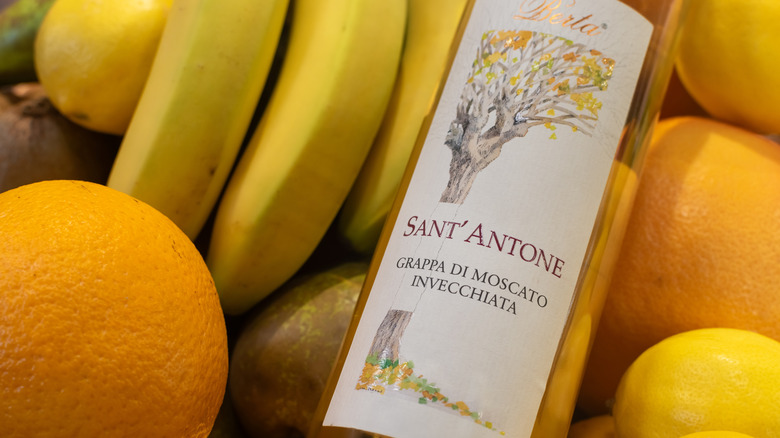When And How Is Grappa Enjoyed In Italy?
While visiting your favorite Italian restaurant or taking that once-in-a-lifetime trip to Rome last summer, you might've heard Italians speak about their passion for digestifs. Though the word might sound foreign to your ears, you've most likely indulged in a digestif yourself at least once or twice. While you've probably had a sip of tangy limoncello at some point or sampled the sweet, almondy flavor of amaretto in popular cocktails, grappa is an Italian beverage that's less appreciated but rapidly growing in popularity.
The three most important things to know about grappa and other similar digestifs are that it's enjoyed after dinner, it's sipped slowly, and it's traditionally served neat. Like other digestifs, grappa is served at the end of the meal in a custom that dates back to the 16th century. The original idea behind a digestif was that the spirit could make a person feel less full after a meal, and although scientific research hasn't proven this theory exactly right or wrong, it's evolved into a custom that aims to extend the evening and keep guests at the dinner table. In 2008, the European Union legally defined and protected grappa by implementing special status and specific criteria to classify the spirit, solidifying its position once and for all as a storied Italian drink.
Understanding grappa and its serving traditions
Grappa may often be confused as a wine-based drink, though it's classified as a spirit — one of the many Italian spirits out there. It's created by distilling pomace from the winemaking process, meaning the leftover grape stems, seeds, and skins, eventually distilling it into a new spirit. In recent years, the process has become highly regulated, with grappa earning Protected Geographical Indication or PGI. This means that every bottle sold has been produced solely in Italy, San Marino, or the Italian-speaking regions of Switzerland, and is created without adding water to the pomace to ensure the proper taste. The flavors of grappa range from floral and fruity to dark and earthy, all depending on the type of grape and how it's used.
Historically, grappa is served in a shot glass or tulip glass as a post-dinner gesture of hospitality. The spirit is served neat, so as not to weaken the distinctive notes and aromas. It's typically served lightly chilled, depending on the age of the grapes. Don't be alarmed if you see grappa aficionados dip a finger into their glass and rub a drop of the spirit on the back of their hand, as this is a popular method to scent the rich fragrances before sipping the drink. If you truly want to drink the spirit the way Italians do, sip it slowly and savor its complex flavors to enjoy some time-honored Italian culture.

